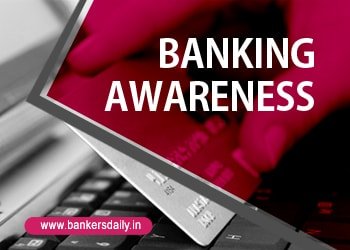Automated Teller Machines
AUTOMATED TELLER MACHINES
ATM is an electronic machine operated by a customer himself to deposit or withdraw cash.
In India, the establishment of ATMs was recommended by the Dr. C RAngarajan committee.
The standalone ATMs started making their appearance in India in the early 1990s.
Operations
For ATM, a customer requires an ATM card, read by the machine. To use an ATM, the customer to insert the card in the machine and quote his PIN. After establishing the authentication, the ATM permits a customer to make entries and after processing the transaction, the machine performs the desired function. On completion of the transaction, the customer’s card is ejected.
Minimum/ maximum cash withdrawal limit
- Banks set limit for cash withdrawal by customers.
- This limit is displayed at the ATM locations.
- Use of ATMs of other banks for cash withdrawal and balance enquiry, free of charge with effect from april 1, 2009, under RBI “Free ATM access policy”.
Details are as under
(i) access is for savings bank accounts;
(ii) there is a cap of Rs. 100,000 per withdrawal
(iii) it permits only 5 free transactions per month including cash or non- cash transaction.
(iv) For transactions beyond the free transactions, banks charge Rs 20/- per transaction.
Failed transaction at ATMs
RBI decided as under wef july 01,2011:
a) the time limit for resolution of customer complaints by the issuing banks is 7 working days from the date of receipt of customer complaint. The delay / failure beyond above period to re-credit the customer’s account entails payment of compensation to the customer@ Rs. 100/-per day.
b) A customer is entitled to receive compensation, only if a claim is lodged with the issuing bank with in 30days of the date of the transaction.
c) All disputes regarding ATM failed transaction shall be settled by issuing bank and acquiring bank through ATM system provider only. No bilateral settlement arrangement outside the dispute resolution mechanism available with the system provider is permissible.
ATM Models
Online ATMs:
These ATMs are connected to data base of the bank and provide transactions on real time basis, online. The withdrawal limits are fixed and monitored by ATM switch centre.
Offline ATMs:
These are not connected to banks data base. Withdrawal are permitted with in a per-fixed linit irrespective of the amount balance.
Stand alone ATMs:
These are not connected to any ATM network. The transactions are restricted to the ATM branch and link branches only.
Networked ATMs:
These ATMs are connected an ATM network.
Onsite ATMs:
The ATMs that are installed away from the bank branch premises.
Off-site ATMs:
The ATMs that are installed away from the bank branch premises, such as in a shopping centre, air port, railway station etc.
Services/facilities available at ATMs:
In addition to cash dispensing, ATMs many offer other services/facilities such as account information, cash deposit, regular bills payment purchase of re-load Vouchers for Mobiles, mini/short statement, loan account enquiry etc.
ATM Customer Interface Components
(1) Video Display Monitor
(2) key board or key pad
(3) Touch screen
(4) Slots for card reader, cash dispenser, envelop dispenser, deposit slot
Security:
In order to provide proper security, the ATMs are provided access locks covering key boards, monitor etc. that could be opened with the help of ATM card.





